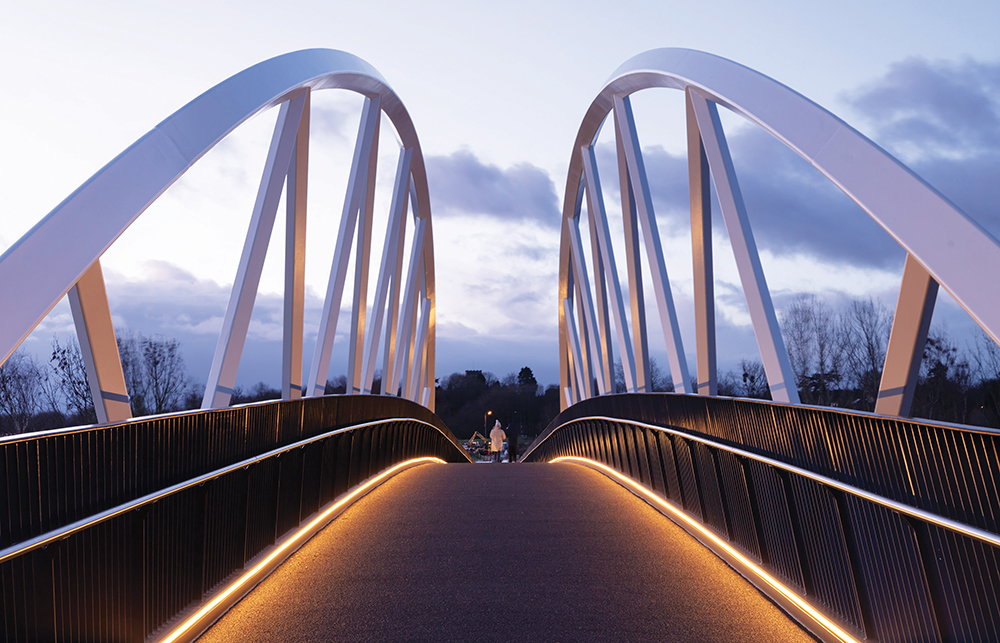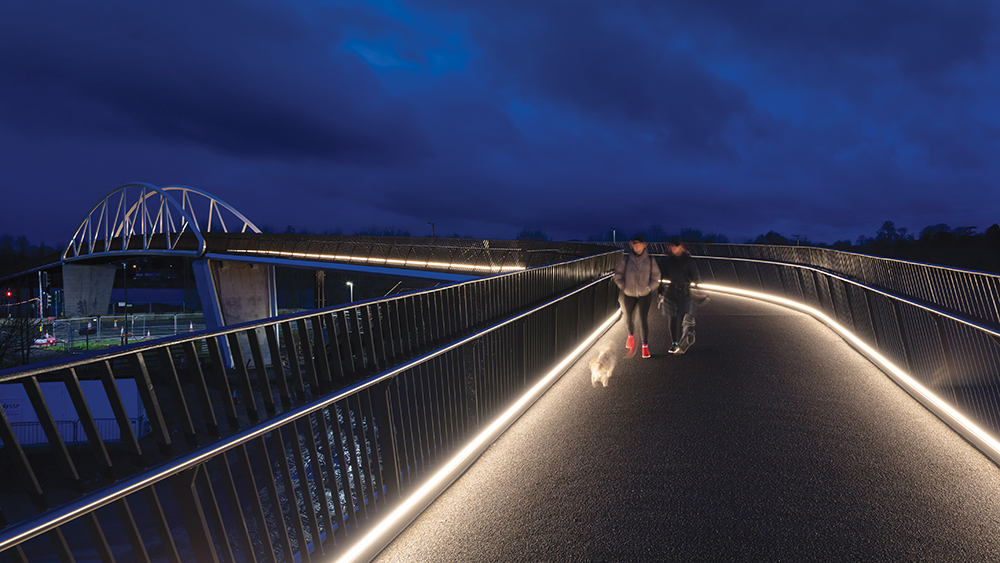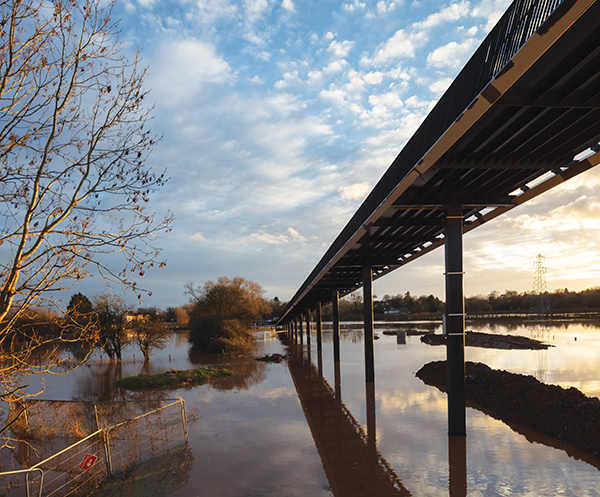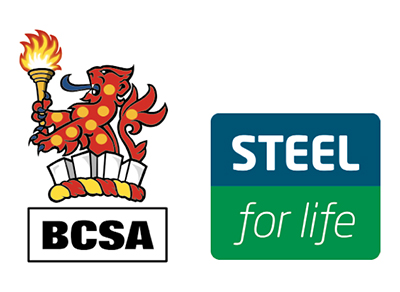
Spanning one of Worcester’s busiest roads, Hams Way footbridge has a trussed-arch main span and replaces a signal-controlled pedestrian crossing.
Forming part of the Worcester Southern Link Road Phase 4 and spanning the A4440, Hams Way Footbridge is a 300m-long pedestrian and cycle bridge with an elegant trussed-arch main span.
Award: Hams Way Footbridge
Architect: Moxon Architects
Structural engineer: COWI
Steelwork contractor: S H Structures
Main contractor: Alun Griffiths (Contractors)
Client: Worcestershire County Council
Client Worcestershire County Council expressed a preference for the arch-type main span design as it would be consistent with other footbridges in the region. Aware that traditional steel arch bridges with vertical hangers can fall foul of the Eurocode pedestrian dynamics requirements, the design team proposed a 42m-long bowstring truss.
The truss diagonals provide additional stiffness and push the resonant frequencies above the limits for pedestrian excitation. The 6m-high trusses lean inward by 7.5 degrees and are unbraced to give what has been described as a dramatic user experience when crossing on foot.
The main span chords and diagonal members are formed from square hollow sections (SHS) rotated through 45 degrees. These diagonal sections are said to mirror a similar detail on the nearby Diglis Footbridge and are designed to catch light on their upper half with shadow cast on the lower, which makes them appear slender.

The bridge’s deck plate is 10mm thick and is stiffened with flat plate stiffeners welded beneath and two edge stiffeners above, formed by folding up the edges of the deck plate. The crossbeams are rolled universal beam sections at 3m centres, designed with stiffened connections to the truss chords to provide a degree of ‘U-frame’ stiffness, stabilising the unbraced top chord.
At the ends of the arches the top and bottom chords meet at a tight curve, hiding the supports and giving the impression that the bridge is floating above the piers. This element of the bridge is fabricated from conically curved steel plate, stiffened internally.
“This is an excellent example of how inspired architectural details can create a ‘statement’ bridge.”
“This was an important part of the bridge design, as the architectural detail needed to resist significant forces at the junction of the arch and the hidden bearing crossbeam,” says COWI associate Ben Curry.
“Early collaboration between the design and fabrication teams was key in achieving a detail that is efficient in both structural performance and fabrication effort. The finished product is said to be seamless, giving no hint of the complicated engineering within.”
The bridge’s main span is reached via multi-span approach ramps with an overall length of 250m, as well as a staircase at the northern end. Because of the ramps’ length, an economic method and one that was quick to construct was required. The solution was to use standardised 12m-long steel spans on single rectangular hollow section steel piers.

The ramp edge beams feature the same rotated SHS form as the main span chords, but use simplified flat plate crossbeams for economy. The ramp edge beams mirror the tightly curved arch end segments at the junction between the ramps and the main span.
The steel piers were required to be relatively flexible in the longitudinal direction to accommodate thermal expansion in flexure, but stiff enough in the transverse direction to provide stiffness and restraint to eccentric loading.
The judges said this is an excellent example of how inspired architectural details can create a ‘statement’ bridge.
Produced by the BCSA and Steel for Life in association with Construction Manager











